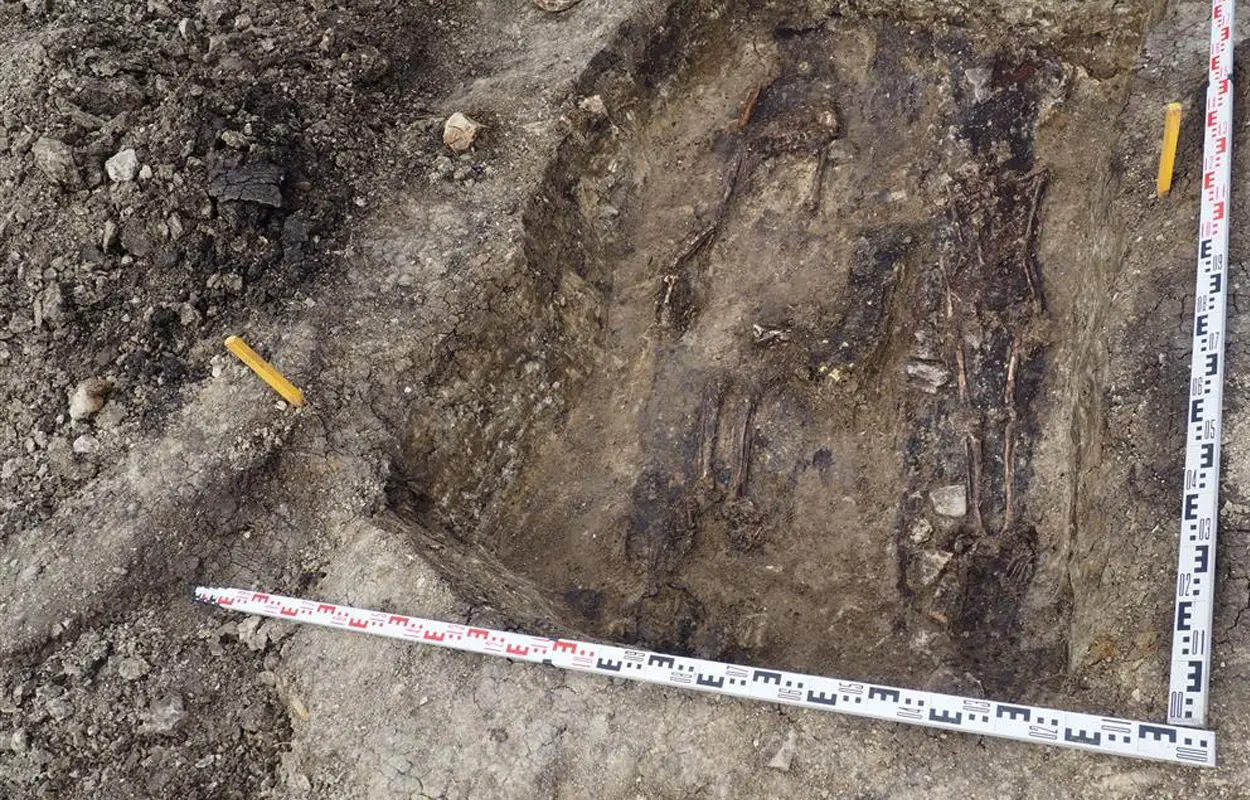Archaeologists from the Institute of Archaeology of the Russian Academy of Sciences, working in collaboration with Samara University and the Khalikov Academy of Sciences of the Republic of Tatarstan, have uncovered a burial ground in the Nizhny Novgorod region of Russia.
The discovery was made near the village of Pilna in the Pilninsky District of Nizhny, in which archaeologists found burials dated to the 5th to 10th century BC, and the 1st to 11th century AD.
One of the burials contains the remains of a woman, who was buried with a bronze temple pendant and a zoomorphic overlay in the form of a goat’s head, which according to the researchers dates from the Scythian era when Scyths migrated during the 9th to 8th centuries BC from Central Asia to the Pontic Steppe in modern-day Ukraine and Southern Russia.
Two large pits lined with wooden logs were found containing a paired burial of a man and woman, and a second with the burial of a woman. The paired burial was probably disturbed during antiquity, however, the team found funerary offerings of a lanceolate spear, fragments of an iron arrow, plate clasps, and the remains of beads.
Within the single woman’s burial, the researchers found plate clasps, a set of beads, non-ferrous metal, fragments of a knife, and a pot.
An inspection of the area adjacent to the burial ground has revealed several objects likely displaced from looted burials. The team uncovered a buterol from a sword scabbard, a decorated overlay depicting the image of a bear or wolf in a style corresponding to nomads of the Southern Urals (6th to 7th century BC), as well as double-barbed arrowheads, and a spearhead associated with the Piseral-Andreevsky cultural horizon.
Header Image Credit : Institute of Archaeology of the Russian Academy of Sciences





